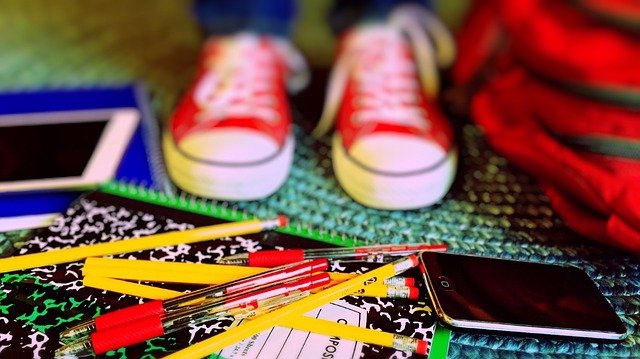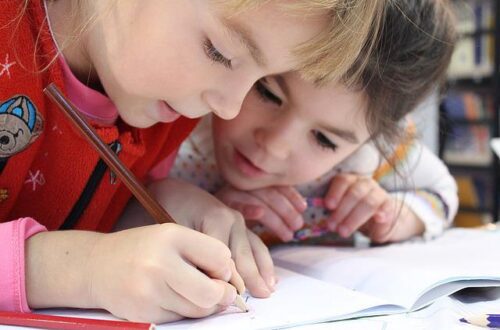Unschooling: A New Trend in Homeschooling

With the explosive growth in homeschooling, parents have a variety of options when it comes to educating their children at home. One homeschooling trend that’s gaining traction is unschooling.
Here we discuss some of the pros and cons of unschooling, so you can decide for yourself if this approach is right for your family.
{Affiliate links included below}
What is unschooling?
The term unschooling appears to have been coined in the 1970s by educator John Holt. At its simplest level, unschooling is a type of schooling in which children are not taught using traditional methods such as textbooks, workbooks, and lectures.
Instead, unschooling families focus on providing a child-led learning environment. This means that children are free to explore their interests and learn at their own pace.
The philosophy behind the unschooling movement is that children are naturally curious, energetic, and excited about the world. With an appropriate amount of guidance, this natural curiosity can lead to self-reliance, critical thinking, and independent decision-making.

Traditional schools, which are typically based on a “one-size-fits-all” model, require children to learn the same material in the same way, at the same pace, and at the same time.
Unschooling is a stark alternative to the traditional schooling blueprint.
Instead of the lectures-and-textbooks approach, unschoolers allow their children to explore and learn through unconventional methods. This may include conventional activities like watching videos and reading books, but usually focuses more on hands-on projects and activities, as well as interacting face-to-face with others who have knowledge of a particular subject.
While unschooling can take place in a more traditional classroom setting, it is usually found as a form of homeschooling.
What are the benefits of unschooling?
Proponents of unschooling cite several features that they believe make this an attractive educational option.

Unschooling is student-led
While traditional classroom education focuses on the top-down, teacher-led model where students tend to be passively directed, unschooling requires the child to be an active participant in choosing the direction of their education.
One of the most important things to remember about unschooling is that it doesn’t rely on the conventional teaching methods used by schools.
Unschooling parents may do something like leave a variety of educational materials out for their child to find and consume, or encourage the child to pursue alternative ways of gaining knowledge about a particular subject of interest.

Since the child basically picks the curriculum, this makes it more likely that the student will be more enthusiastic and passionate about the subject matter. Parents tend to be facilitators rather than directors of their child’s educational pursuits.
Unschooling does not equal no schooling
While unschooling may seem too unstructured to some, advocates point out that what seems like a weakness is actually one of its top advantages.
One leader in the unschooling community, Dayna Martin, has published a book about their family’s experiences. Her husband makes wooden toys for children, and the family is a proudly self-proclaimed unschooling family. Their children have never received a formal education, yet they naturally learned math and history.
Unschooling families don’t have a standardized curriculum or formal tests to measure what their children are learning. It’s increasingly popular for parents to give up on a formal curriculum approach after realizing that the unschooling lifestyle is more conducive to a child’s interests.
Unschooling allows parents and children to learn together
Unschooling allows children to explore their own interests, which is a great way to help them develop independent thinking skills. But it also allows parents and children to spend more time together.
Parents can learn alongside their unschooled children, and can work through problems and questions together. Those who have chosen this method report learning more and feeling more engaged with their children.
Unschooling promotes a wholistic learning approach
One of the main benefits of unschooling is that it encourages learning in every aspect of life.
For example, children will learn through projects, conduct experiments, and present their results. They’ll also learn how to follow directions, manage time, and solve problems. Furthermore, unschooling encourages children to develop self-confidence and creativity.
An unschooled child has the opportunity to choose which books and adults to talk with, and they learn according to their own unique personality and learning style. As a result, unschoolers often have high levels of motivation and are able to fill in information gaps when needed.

Unschooling might also be a natural fit with the homesteading lifestyle.
What are the challenges of unschooling?
Critics of unschooling worry that unschooled children are deprived of a quality education. By foregoing textbooks and standardized tests, there is no way to ensure a child is learning what their peers are studying, or that they fully understand the subjects considered necessary for a well-rounded education.
Unschooling may also be difficult at first, especially for parents who aren’t used to letting children decide what to learn. If either the parents or child lack self-discipline, unschooling may turn into a haphazard and lackadaisical approach to learning.
Another concern is that by letting a child self-direct their education, they may become reluctant to listen to authority figures or follow social norms later in life.
Children can become disinterested in a subject over time, so unschooling parents should keep this in mind. Parents will also need to at least informally monitor their child’s efforts to make sure adequate progress is being made.
Finally, critics suggest that unschooling may not adequately prepare students for the rigors of a college environment.
How do you start to unschool?
If you’re thinking about unschooling your children, or are new to the unschooling lifestyle, you may be wondering how to get started. Here are a few tips to help you get going:
- Don’t worry about what other people think. Unschooling is a very individualized approach to education, and there is no one right way to do it. As long as you and your child are happy with the way things are going and the learning progress that’s made, then it’s likely that unschooling is working well for you.
- Be patient. It takes time to transition to an unschooling lifestyle, both for parents and children. Don’t expect everything to happen overnight. It’s definitely a process!
- Follow your child’s lead. One of the best things about unschooling is that it allows children to learn at their own pace and in their own way. Don’t be frustrated if you and your child have to go through a learning curve as you adjust to this new learning approach.

Is unschooling for everyone?
Unschooling works best if both you and your child enjoy unconventional educational styles. If your child is a self-starter who is passionate about learning, then unschooling may be a good fit for you.
On the other hand, families who prefer a more formal, traditional approach to learning will likely be frustrated with unschooling and unhappy with the results.
Final thoughts on unschooling
Unschooling is a form of educational philosophy and practice characterized by child-led learning. A basic premise of unschooling is that learning is innate, and that children naturally want to learn.
In unschooling, children are free to pursue their own interests in an environment filled with resources that stimulate learning, including human resources and a variety of educational materials.
Unschooling is often seen as a more natural approach to learning, as it mirrors the way children learn outside of school. Although unschooling is not for everyone, it can be a very successful way of learning for some children.








